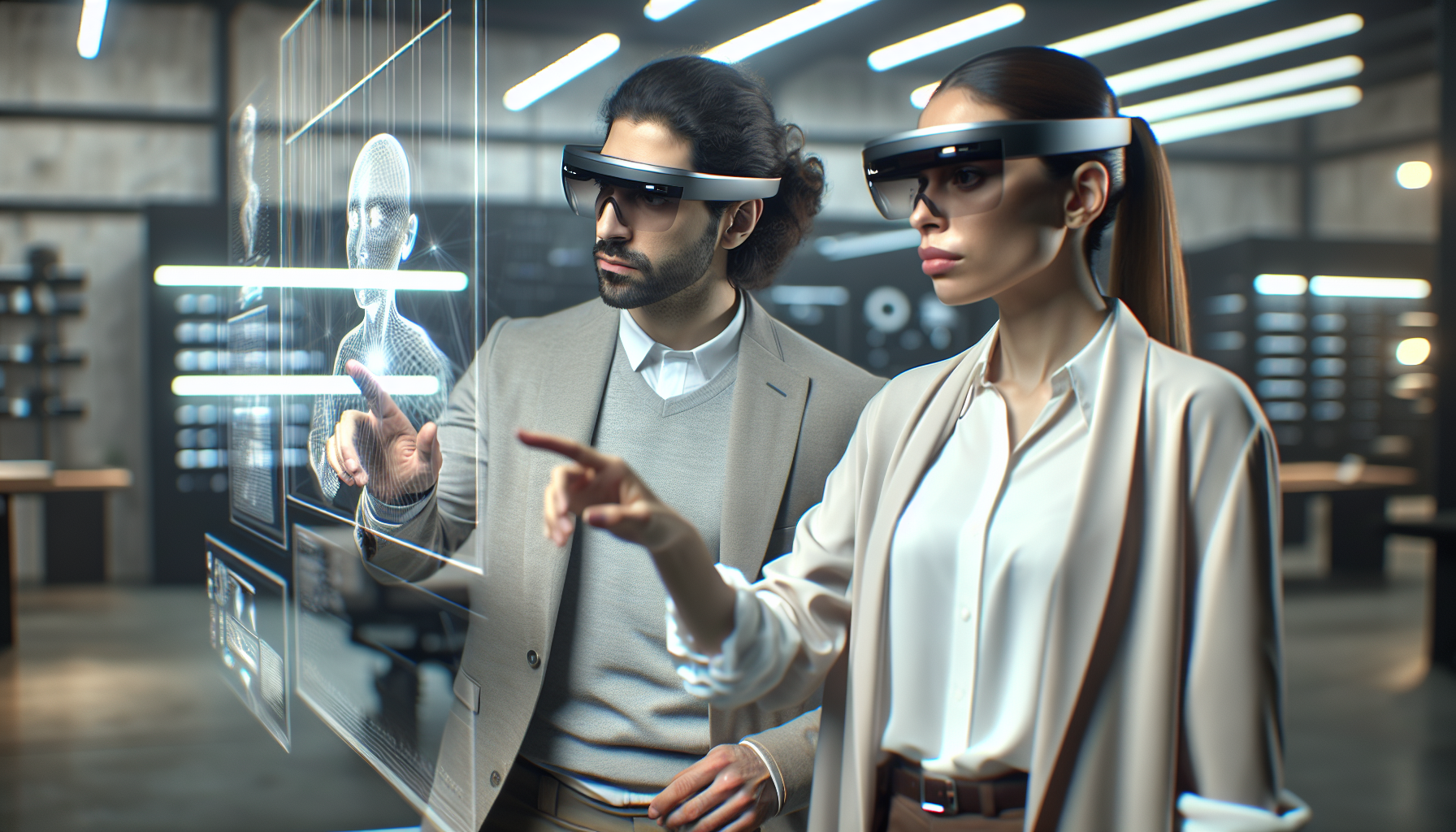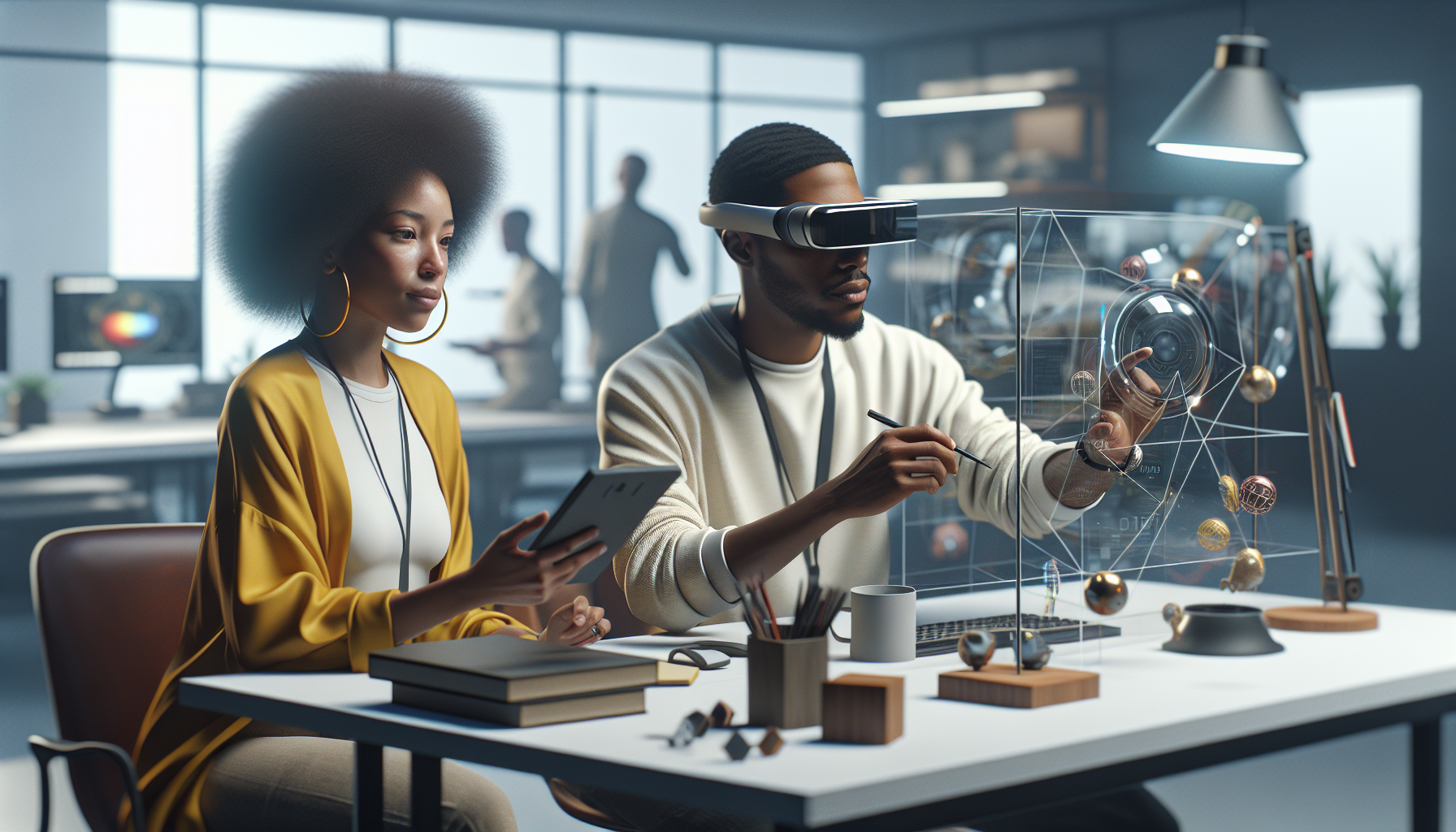Table of Contents
Understanding Augmented Reality Advertising

Key Points
- Increasing Investment: More brands are allocating significant portions of their marketing budgets to augmented reality advertising.
- Consumer Engagement: Augmented reality (AR) creates highly interactive and engaging consumer experiences, enhancing memorability and brand connection.
- Technology Growth: The adoption of AR technology is expected to reach 1.73 billion users globally by 2024, indicating a rapid growth trajectory.
- Market Impact: AR advertising is transforming traditional marketing strategies, offering unique and memorable experiences that align with consumer trends.
- Challenges and Opportunities: While AR advertising presents new opportunities for engagement, it also requires careful integration into marketing strategies to align with brand identity and business growth.
What is Augmented Reality Advertising?
Augmented reality advertising is a digital marketing approach that uses AR technology to superimpose digital elements like images, animations, and sounds onto the real-world environment. This blend of digital and real elements creates an immersive experience for users, typically accessed through devices such as smartphones or smart glasses. Businesses leverage AR to present their products or services in an interactive manner, enhancing the traditional consumer experience. For instance, a fashion retailer might use AR to allow customers to try on clothes virtually, thereby providing a clearer idea of the product before purchase. AR advertising can be implemented across various platforms, including mobile apps, social media, and digital signage, broadening the reach and accessibility of campaigns. The effectiveness of AR advertising lies in its ability to engage consumers actively, making the advertising experience both fun and memorable, which can significantly enhance brand recall and customer loyalty.Types of Augmented Reality Advertising
AR advertising can take multiple forms, each serving different marketing needs and objectives. Virtual try-ons, for example, are popular in retail, allowing customers to visualize products on themselves before making a purchase. This type of AR enhances the shopping experience and can reduce return rates. Product demonstrations through AR help showcase products’ features and benefits in a way that static images or traditional video cannot. By interacting with a 3D model of the product, consumers gain a deeper understanding of its use and functionality. Gamified AR experiences engage users by incorporating brand-related games that offer entertainment while subtly promoting the product or service. These experiences are not only engaging but also encourage repeated interactions with the brand. Interactive print ads represent another innovative use of AR. In these ads, traditional print advertisements are enhanced with digital content, bringing static images to life when viewed on a mobile device.The Challenge of User-Centric Design in AR Advertising

Identifying the Core Issue
One of the primary challenges faced by companies in AR advertising is creating designs that are not only visually appealing but also user-centric. This involves understanding the diverse needs and preferences of users and integrating this insight into the design process. Many AR applications fail to engage users effectively because they prioritize technological showcase over user experience. This misalignment can lead to AR experiences that are impressive technologically but fall short in terms of usability and practical value. Furthermore, the integration of user feedback into the AR design process is often overlooked. Without this critical input, designs may not fully resonate with or meet the expectations of the target audience, leading to lower engagement and adoption rates. Lastly, the challenge extends to maintaining a balance between innovation and brand consistency. AR experiences must not only be innovative but also align with the brand’s identity and core values to ensure a coherent marketing message.Real-World Implications
For instance, a startup in the fashion industry introduced an AR fitting room app intended to reduce return rates by allowing customers to try on clothes virtually. However, the app received lukewarm responses because it did not accurately reflect the fit and look of the clothes, leading to frustration and decreased trust in the brand. This example underscores the importance of a user-centric approach in AR design, emphasizing the need for accurate and realistic representations in AR applications to meet user expectations and enhance the overall brand experience.Strategies for Effective AR Ad Design

Step 1: Understand Your Audience
Begin by conducting thorough research on your target audience. Understand their preferences, behaviors, and technological comfort levels. This information will guide the design process, ensuring that the AR experience is tailored to the audience’s expectations and needs. Utilize surveys, focus groups, and user testing to gather insights directly from your target demographic. This direct feedback is invaluable in creating an AR experience that resonates with users. Consider demographic factors such as age, tech-savviness, and lifestyle, as these can influence how users interact with AR technology. Tailoring the experience to fit these characteristics can greatly enhance user engagement.Step 2: Design with User Experience in Mind
Focus on creating intuitive and user-friendly interfaces. The success of an AR application heavily depends on how easily users can navigate and interact with the experience. Incorporate user feedback early and often in the design process. Iterative testing and refinement based on real user interactions can help fine-tune the application to better meet user expectations. Ensure that the AR experience adds real value to the user. Whether it’s providing unique information, enhancing the shopping experience, or offering entertainment, the AR element should serve a clear purpose.Frequently Asked Questions
What is augmented reality advertising?
It is a type of advertising that integrates digital information with the user’s environment in real time, creating a hybrid of real and virtual worlds.How does AR advertising enhance user engagement?
By creating interactive and immersive experiences, AR advertising allows users to engage with the content actively, leading to higher engagement levels.Can AR advertising be integrated into existing marketing strategies?
Yes, AR can be seamlessly integrated into existing marketing strategies to enhance user interaction and engagement without disrupting the overall marketing flow.What are the key benefits of using AR in advertising?
AR advertising can increase brand awareness, improve customer engagement, and provide unique and memorable experiences that differentiate the brand from competitors.What are the challenges of implementing AR advertising?
Challenges include ensuring high-quality user experience, aligning AR experiences with brand identity, and addressing the technological limitations of current AR platforms.Future Predictions for AR in Advertising
 As we look ahead, the landscape of AR advertising is poised for significant transformations. Here are five predictions based on current trends and technological advancements:
As we look ahead, the landscape of AR advertising is poised for significant transformations. Here are five predictions based on current trends and technological advancements:- Increased Personalization: AR advertising will offer more personalized experiences based on user data, enhancing relevance and effectiveness.
- Greater Integration with Social Media: More social platforms will incorporate AR features, allowing brands to engage with users in new and innovative ways.
- Advancements in AR Technology: Technological improvements will enhance the quality and accessibility of AR experiences, broadening their appeal.
- Expansion into New Industries: Beyond retail and entertainment, AR will find applications in sectors like education and healthcare, providing informative and interactive experiences.
- Focus on Privacy and Security: As AR becomes more prevalent, ensuring the privacy and security of user data will become a critical focus for developers and advertisers.
References
- Engine Creative – Augmented Reality Campaigns & How They Work
- Forbes – 15 Unique Applications Of AR In Advertising To Anticipate In 2022
Disclaimer
This article is AI-generated for educational purposes and does not intend to provide specific advice or recommendations for any individual or on any specific security or investment product. It is only intended to provide education about the financial industry. To determine which investments may be appropriate for you, consult your financial advisor prior to investing.Latest posts by Leo Celis (see all)